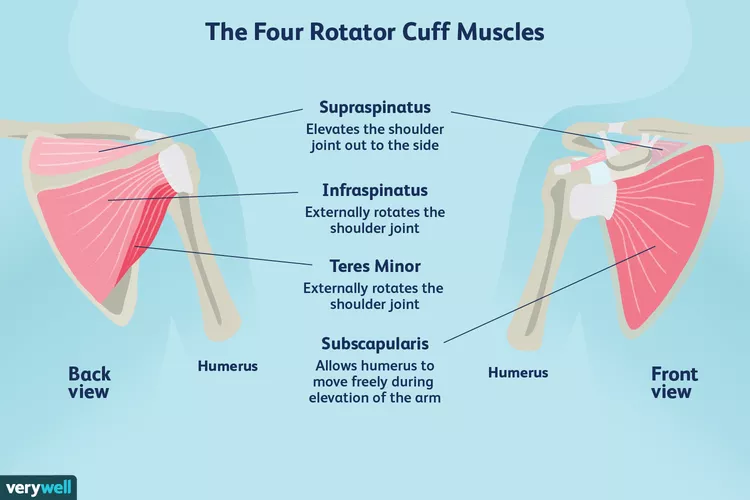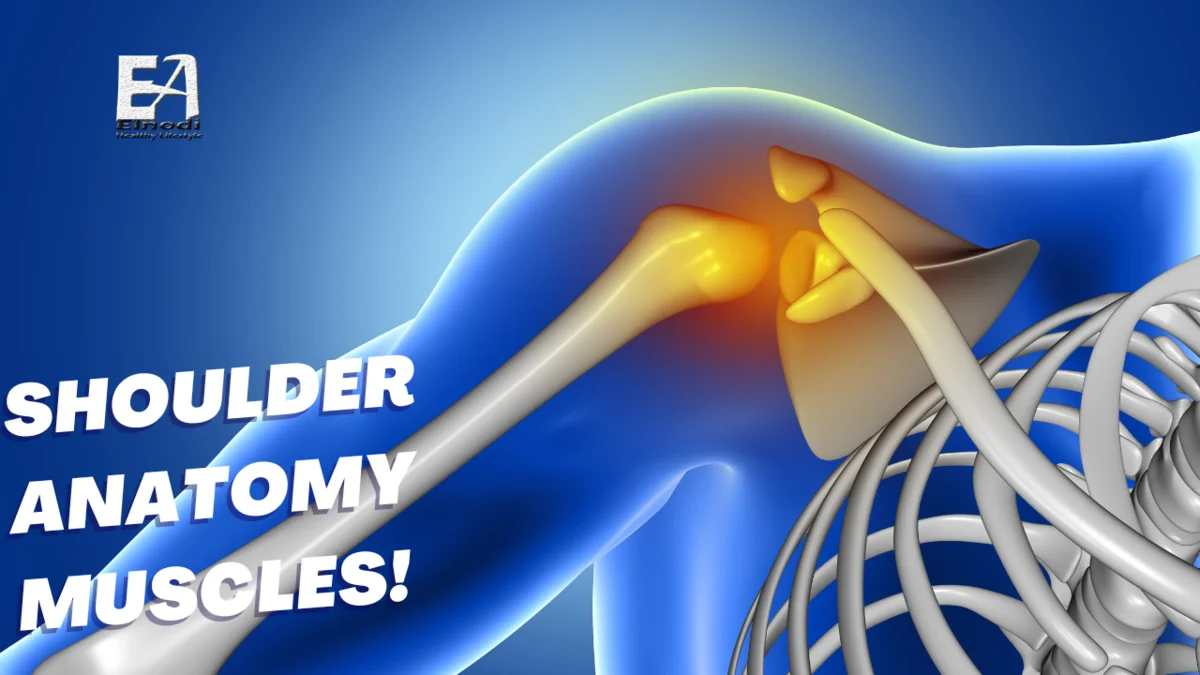Don’t know what muscles are in your shoulder? This handy guide will have you remembering everything you need to know about the shoulder anatomy muscles!
Your shoulders are one of the most complex and mobile joints in your body. They allow you to reach overhead, throw a ball, and even brush your hair. But with all that movement comes the potential for injury.
We’ll cover everything from warming up before a workout to stretching after a long day at work. By the end of this article, you’ll have a better understanding of how to care for your shoulder muscles and prevent injury. (1)
Understanding Shoulder Anatomy Muscles
The shoulder joint is a highly complex and mobile joint, having the highest range of motion of any joint in the body. This flexibility allows to you to hit a backhand swing in tennis, stretch to reach things on the top shelf, brush your hair, or get dressed. The shoulder also helps you position your hands for movements such as waving goodbye or using the mouse on your computer. (2)
Shoulder Anatomy Muscles and their functions
Deltoid

The deltoid muscle is the largest in the shoulder. It is in charge of moving the arm in different directions, such as abduction (lifting the arm away from the body), adduction (bringing the arm back towards the body), flexion (raising the arm up), and extension (dropping the arm down).
Rotator cuff

The rotator cuff is a collection of four muscles that aid in shoulder joint stability. The supraspinatus, infraspinatus, teres minor, and subscapularis are the muscles involved. The rotator cuff muscles aid in keeping the humerus (upper arm bone) head centered in the glenoid cavity (socket) of the scapula (shoulder blade).
Pectoralis major
The pectoralis major is a broad muscle that runs across the front of the chest. It is in charge of moving the arm across the chest and adducting the arm.
Latissimus dorsi

The latissimus dorsi is a large muscle that covers the back of the upper body. It is responsible for pulling the arm down and back and for extension of the arm.
Trapezius
The trapezius muscle is a big muscle that runs along the upper back and neck. It is in charge of elevating the shoulders, shrugging them, and twisting the head.
Serratus anterior

The serratus anterior is a muscle that lies on the side of the chest. It is responsible for the protraction of the scapula (pulling the shoulder blade forward) and for the upward rotation of the scapula (rotating the shoulder blade upward).
11 Things You’re Forgetting to Do
1. Warming up before exercising
Warming up prepares your muscles for activity and can help you avoid injury. A thorough warm-up for your shoulders should involve some mild arm movements in both directions.
2. Rotator cuff muscle strengthening
The rotator cuff is a set of muscles that aid in shoulder joint stability. These muscles are frequently weak or damaged, resulting in shoulder pain and instability. External rotation exercises and shrugs are two workouts that can help strengthen your rotator cuff muscles.
3. Shoulder muscle stretching
Stretching helps to increase shoulder flexibility and range of motion. This can assist to prevent injuries and make routine activities easier. You may stretch your shoulders in a variety of ways, including arm circles and shoulder rolls.
4. Using proper posture
Good posture aids in the maintenance of healthy shoulders. Your shoulders are relaxed and your spine is straight when you have good posture. This can aid in the prevention of shoulder pain and strain.
5. Avoiding unnecessary tasks
Throwing a ball or lifting heavy objects above your head can inflict strain on your shoulder muscles. If you have shoulder pain, you should avoid these activities until the pain subsides.
6. Lifting techniques that are appropriate
It is critical to adopt good lifting techniques when lifting heavy objects. This will aid in the prevention of shoulder injuries. Lift with your back straight and your knees bent. Lift with your legs rather than your back.
7. Taking breaks from activities that strain your shoulders
If you are doing an activity that is straining your shoulders, it is important to take breaks. This will give your shoulders a chance to rest and recover.
8. Getting sufficient sleep
Sleep is essential for general health, including shoulder wellness. Your body repairs itself and cures ailments as you sleep. Aim for at least 7-8 hours of sleep per night.
9. Eating a healthy diet.
A healthy diet provides your body with the nutrients it needs to repair itself and stay healthy. Make sure to include plenty of fruits, vegetables, and whole grains in your diet.
10. Seeing a doctor if you have shoulder pain
If you have persistent shoulder pain, you should consult a doctor. Your pain could be caused by an underlying medical problem.
11. Paying attention to your body
It is critical to listen to your body and take a break if your shoulders are fatigued or sore. Excessive exertion can result in injury.
Frequently asked questions
what are the 3 shoulder muscles?
Lateral deltoids: Side delts that help move your arm out to the side, as well as up and down. …
Posterior deltoids: Rear delts that help move your arm backward.
what are the 4 shoulder muscles called?
what muscles can you hurt in your shoulder?
What is the most commonly injured muscle in the shoulder?
References
- Terry, G. C., & Chopp, T. M. (2000). Functional anatomy of the shoulder. Journal of athletic training, 35(3), 248.
- McCausland, C., Sawyer, E., Eovaldi, B. J., & Varacallo, M. (2018). Anatomy, shoulder and upper limb, shoulder muscles.





